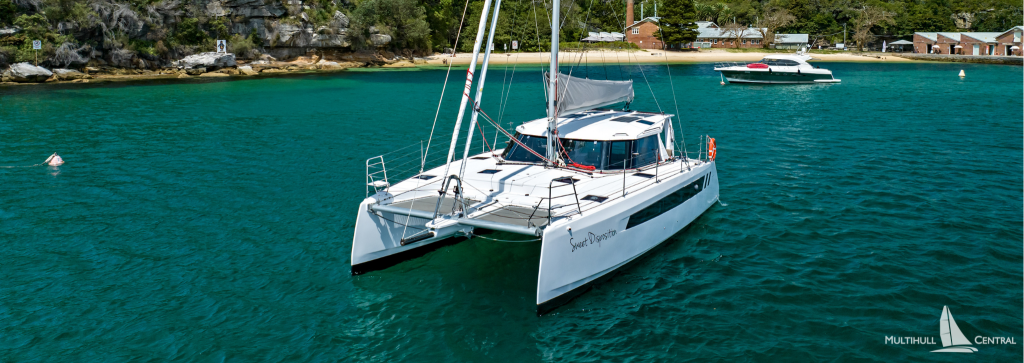
At 11.7 meters or just under 39 feet, the latest new model from Seawind Catamarans sits in a category many would write off as “too small” for true ocean passages. In this interview, we hear from Richard Ward, Seawind’s founder and CEO, about why he and his wife Kerry have chosen this model as their boat of choice for their long term cruising plans.
What are some of the trends you have seen for buyers in the Catamarans market?
I think that much of the current thinking that is widely put out in sailing forums and social media in recently years is that bigger is better and therefore safer. From this perception, we see many buyers now believing that the only boats for ocean crossing are 45ft to 50ft & more. This is not necessarily good thinking for many people, including myself.
Certainly, if you’re a very experienced sailor and young and fit, or someone with strong support crew, crossing oceans on a 50ft boat will likely be smoother, easier and more comfortable than on a 35ft boat. But a lot of the “expert” advice given on the internet is listened to by inexperienced sailors and this can be terrible advice for a novice or older sailor. A 50ft cat in gale force conditions & manned by only a husband & wife is very daunting and possibly very dangerous.
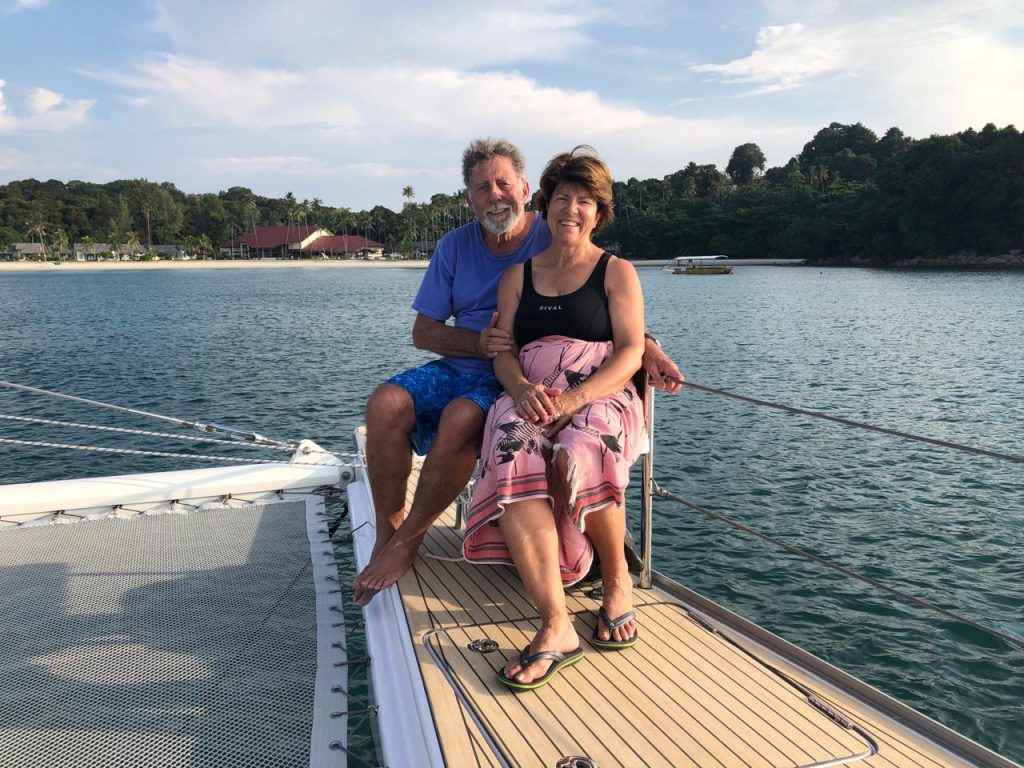
So how can a smaller cat be less daunting for you than the security of say a 50 foot cruising cat?
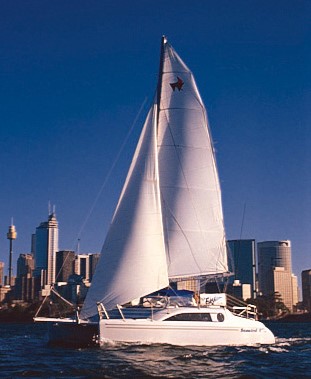
A well designed catamaran with good performance characteristics in a smaller size such as our older model Seawind 1000, the 1160 & 1260 and now our latest 1170 is ideal for shorthanded husband & wife cruising. They are built to a very high standard & designed for just about any sea & weather conditions, but their smaller size means that everything on the boat is much easier to manually handle than a boat of 45 or 50ft and above.
In my younger & fitter days, I did a number of single handed trips in the 28ft Seawind 850 from Sydney to Southport (approximately 400 nautical miles) along the Australian NSW coast. Some of these trips were in terrible conditions with 35knot winds & huge seas. They weren’t pleasant and, if beating into these conditions, it wasn’t unusual to spend 6 hrs getting around one headland, such as the notorious Point Danger. Two knots over the ground often felt a major achievement. But despite its size, the boat felt 100% safe & very easy to handle. I could reef the boat by myself and always felt the loads were manageable and I was in control.
For me, the 1170 (along with the 38ft SW1160 & 42ft SW1260 ) is the perfect size for cruising as a couple with the occasional guests, which is how most boats are used. It is especially suited to a couple such as Kerry & myself because of our age and physical strength. Sadly, few of us get stronger and fitter as we enter our 70’s.
On a 40ft catamaran, everything is manageable by us, from raising sails, to reefing, to using the screecher or spinnaker, anchoring and docking. Sails are not so huge or so heavy. Sails on a 55ft cat are enormous and the cloth often is heavy and as stiff as cardboard. Harder to raise, harder to reef, harder to pack away. So it’s not just the cost that grows exponentially when you go up in size with boats.
Loads very quickly become beyond what one person can easily handle. In ideal picture postcard conditions, handling a bigger boat is generally easy. But extended cruising means that you & your boat must be ready and capable to handle all conditions, sometimes ones that are very challenging with angry seas and gale force winds.
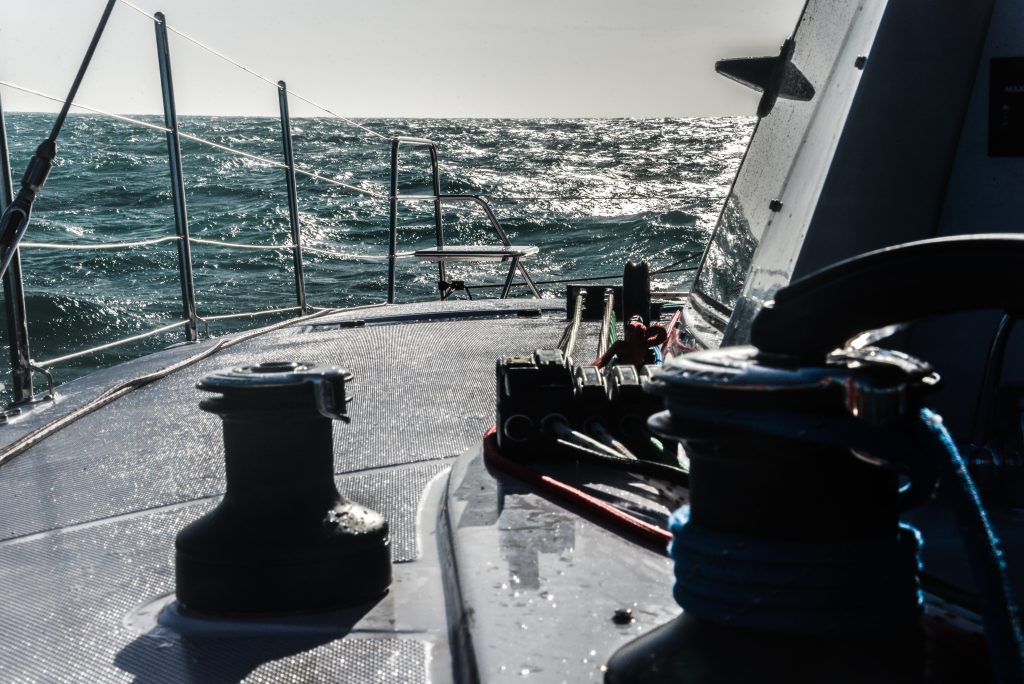
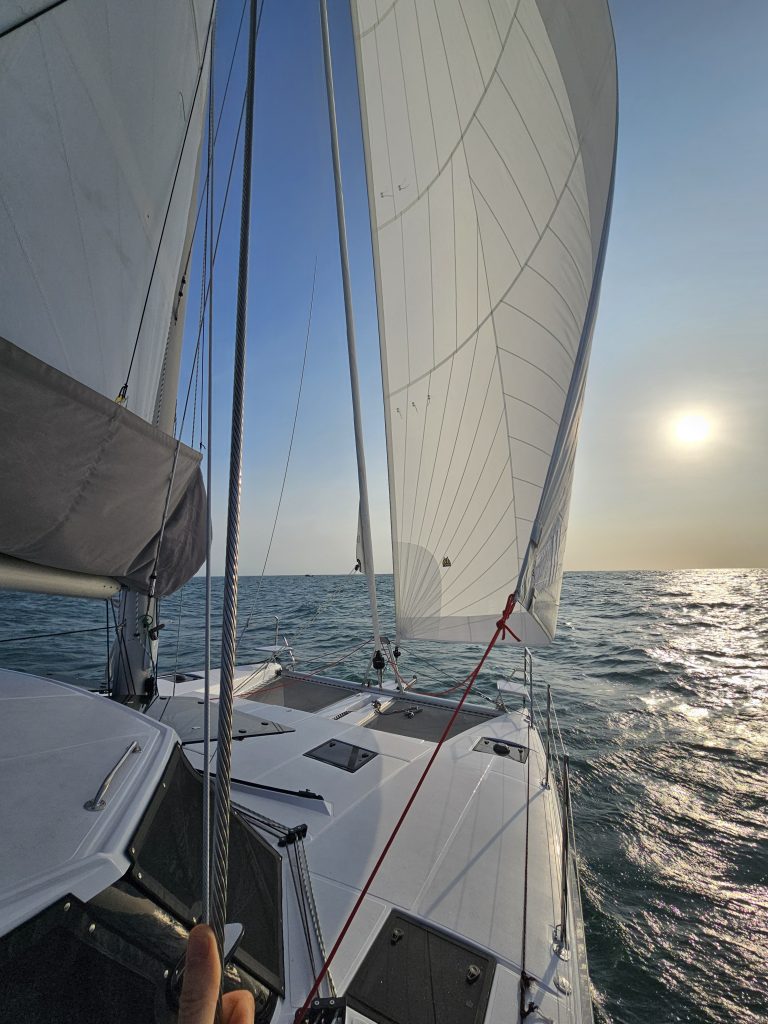
Sometimes, the ocean & weather conditions can throw up the challenges. But sometimes it’s because someone is incapacitated with illness or injury. Sometimes it is both of these together as often happens with sea sickness. At these times, you need to know if the boat is something that either one of you can handle. That thought might not align with the beautiful Instagram filled impressions we see of people cruising around the world, or the rosy picture painted by the boat salesman. However, it can and happen when you are out there in the elements, and need to be ready and able to cope with it. It’s a reminder that you, and only you, are solely responsible for your boat and your crew.
What about the basics such as docking and anchoring?
On a smaller catamaran, docking is much simpler & the mooring lines are far less heavy. Having docked our cats of various sizes thousands of times, the key thing to being comfortable and low stress when docking is knowing how you work as a team, and making sure that both of you are comfortable in what you are doing. Handling heavy dock lines is something we’d rather not need to do if we don’t need to, meaning we can be a little more nimble in jumping on / off the boat at the marina.
Anchoring also is more manageable on a smaller boat, especially if something happens to the windlass. It’s not that I plan to have anyone other than the windlass do all the heavy lifting, but on a boat like the SW1170, the anchor is something I know I can manage if I have to, at only 45 lbs and 8mm chain. It’s also the case that at only 39 foot and with mini keels, the 1170 is able to access anchorages and estuaries that other, larger cats are not able to.
What about the internal space on a 39 foot cat. Is there enough storage and berths for guests?
Taking all of our shore-based luxuries with us when I go sailing is not what I want to do. The SW1170 has a huge amount of comfort with luxury features but not over the top. For living on the water, we’ve always run on the ‘less is more’ approach so I’m more than comfortable that we will have an abundance of storage space on the 1170. I generally like to keep boats uncomplicated and with a comprehensive but not over specified set of options. There’s a lot to be said for the keep it simple approach…
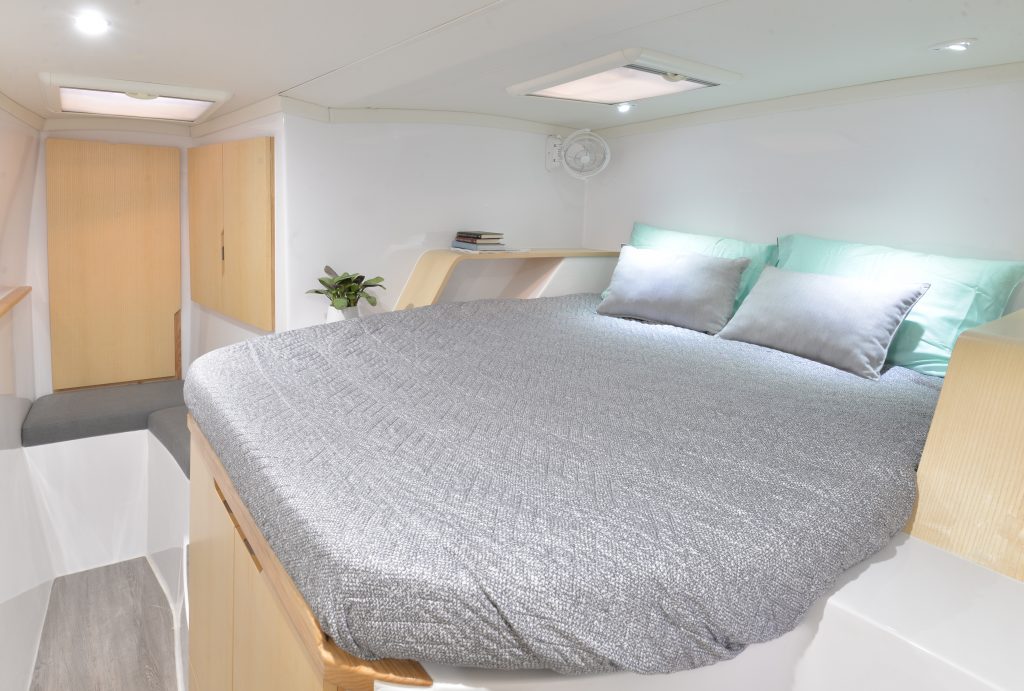
With 3 full width double berths on the boat and a saloon table that converts into a large additional double bed, we have more than enough space for our friends to join us where ever we are. My strong advice to people who want to go cruising is that they buy a boat that suits their need not the needs of all the family & friends that might, or might not, join you on your cruise. My experience is that most family & friends will only join you for a short amount of time & they will be happy to fit in where they can.
And what about some of the design features that make this boat right for you to go cruising on versus say the 1160, 1260, 1370 or even the 1600?
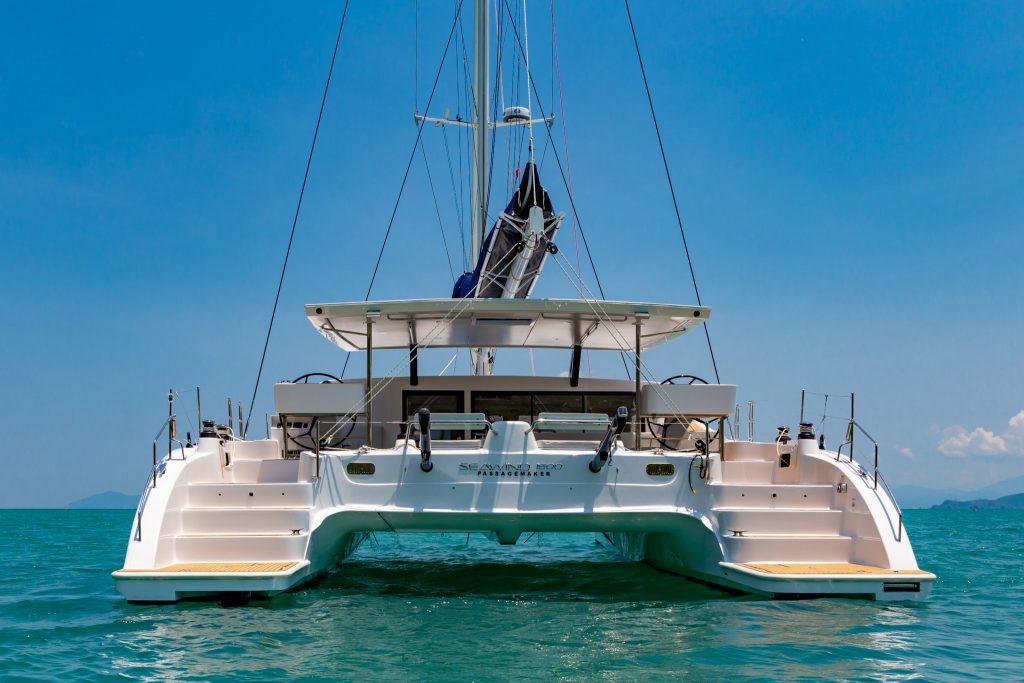
All of these models are awesome cruising yachts that their owners absolutely love. I enjoy sailing on all of these but for a long term live aboard boat for open ocean sailing, I don’t need a boat of greater size that what Kerry & I know we can handle in all conditions. If I was younger & fitter I might be tempted by the Seawind 1370 or the 1600 but the reality is that I simply don’t need a boat of this size. To me the SW1160, SW1260 and the SW1170 all offer that I want – powerful performance under sail or motor and the capability of crossing oceans in any conditions in comfort & style. The SW1160 and SW1260 have many world circumnavigations and many hundreds of ocean crossings to their credit. These are magnificent sea boats but I have chosen the SW1170 as our latest design & it incorporates just about every thing I have learnt in the past 40 years of building Seawinds.
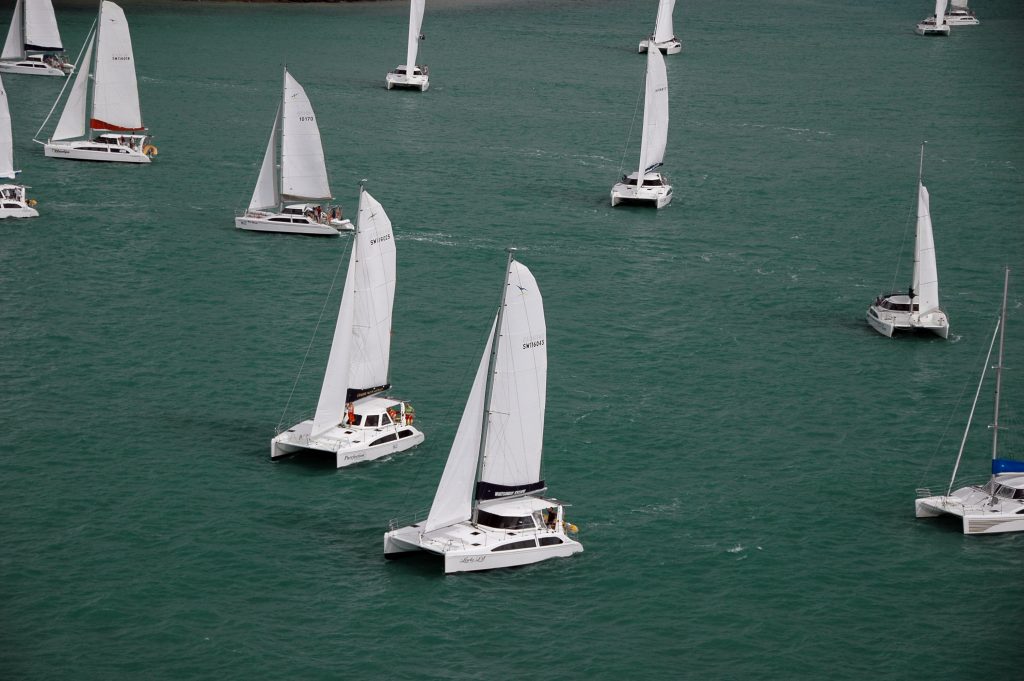
Over the years we have had such incredible stories from our owners doing amazing voyages in Seawinds ranging from our original Seawind 24 to our flagship Seawind 1600. We listen to our owners about what works and what doesn’t work on our boats, and within the scope of this 39ft catamaran, I have tried to incorporate all of the features that I and our owners feel strongly about.
The 35ft to 45ft range is, to a large extent, where we have built the reputation of Seawind with hundreds of incredible success stories from our owners. It’s only natural that I want to keep refining what we have done in the past to create the best catamarans I can, in terms of designing safe and comfortable cruising boats in this size.
When I started the brief on the 1170, I built on the experience we have achieved with the incredibly successful & award winning SW1160 and SW1260. With the 1170, we’ve been able to improve on these models in small but important ways:
Increased freeboard height and wingdeck clearance for comfort at sea and the ability to handle the open ocean.
Clean and clear side decks that are not cluttered and safe and easy to walk down in the worst of conditions. The raised bows of the SW1170 provide an almost flat deck, a feature that becomes especially important in rough weather.
Protected helms. People often think this is all about wind and rain protection but having lived in Australia for most of my life, it’s also the sun that I want to avoid. The Seawind helms, common on most of our models, provide great protection in all weather but while also providing 360 degree vision.
Visibility: This is something that I have always focused on with all of the Seawinds we designed & built. Clear, unobstructed visibility from the helm. It sounds basic but I challenge you to go to around the boat shows and see how many boats have clear visibility without being pushed out on the transom or elevated so high that you are away from the main cockpit area.
Optimized for a couple: When Kerry and I sail as a couple, I always like to be close by, especially at night. Now Kerry has sailed many thousands of miles like me but it’s more about that reassurance and working as a team. So when we planned the layout of the saloon area in the 1170, I wanted to have a day bed like we do on the Seawind 1260, so that the off-watch person can rest in close contact with the one on watch. It’s a feature that just works so well.
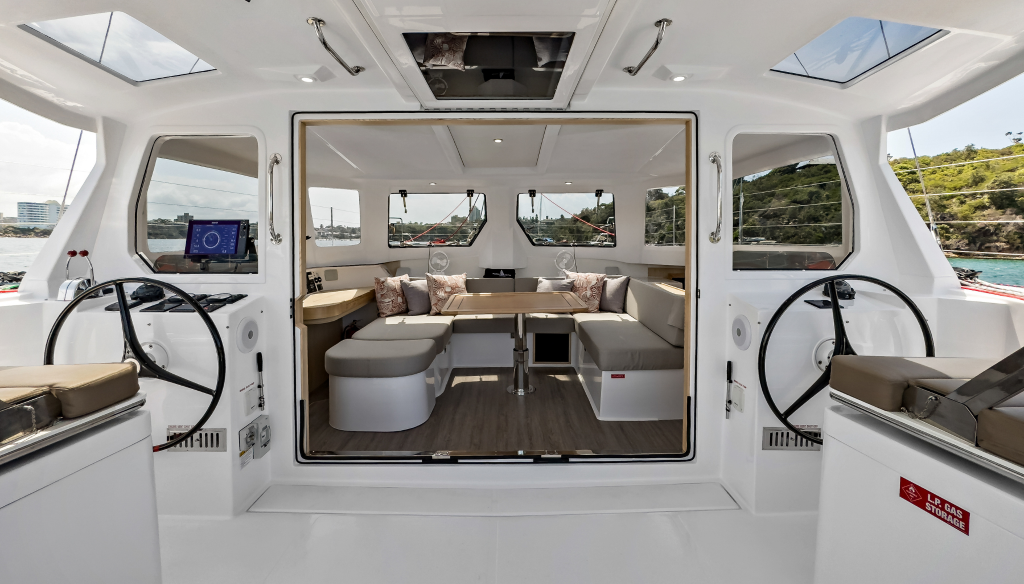
Of course, we have also retained the features that have made our SW1160 & SW1260 so successful & loved by their owners.
Galley down: Ask any Seawind 1160 or 1260 owner and they will tell you they wouldn’t have it any other way. In boats under 42 feet, the galley down is so much more practical as it is offers a huge functional galley without taking away from the luxurious features of the saloon.
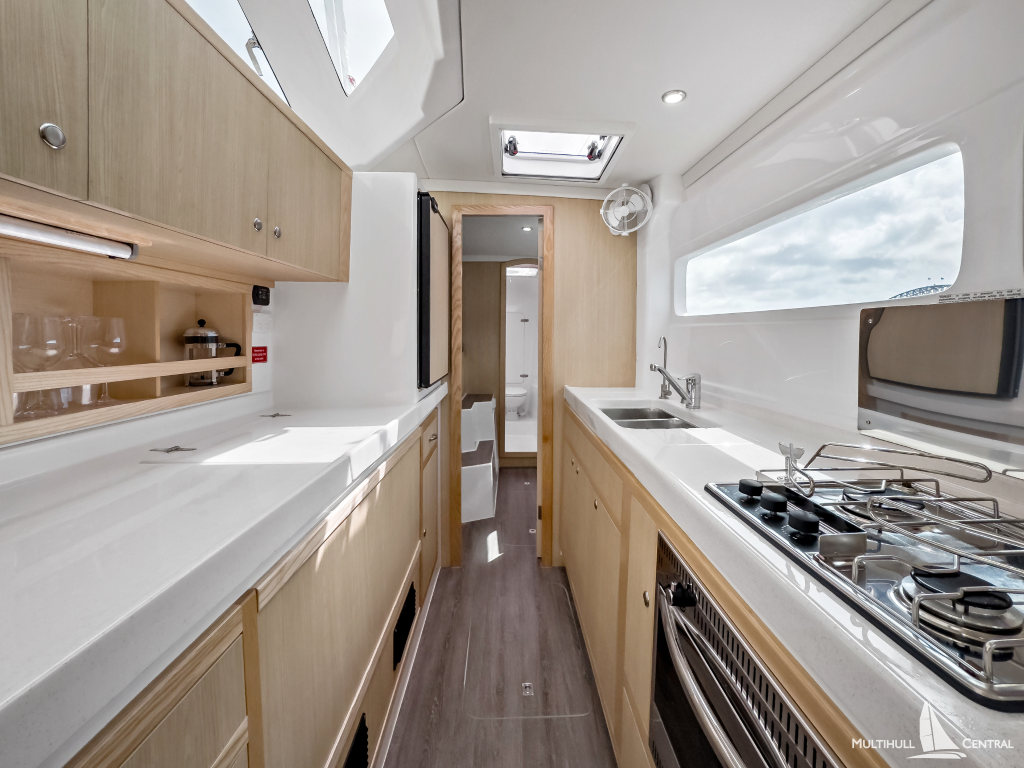
Twin Helms at cockpit level: To me this is essential on a catamaran. Even on a crowded waterway like Sydney Harbour on a weekend, this helm configuration means that the skipper has amazing visibility without having to rely on someone to leeward keeping watch. The twin linked helms allow the helmsman to simply walk a couple of metres to the other helm to be totally self sufficient & not have to call on the off-watch person to be 100% safe always.
Tri-fold Door: This is a wonderful system used in the 1160,1260, 1370 and now the 1170 and, when down, it forms a solid secure door for safety from the elements or intruders. But when up, it creates a huge living space by bringing the saloon and cockpit together as one area.
I could go on. But suffice to say, the new 1170 has taken the best of the existing designs and made dozens & dozens of improvements, some major, some very minor, but all contributing to make a truly superb cruising yacht and both Kerry & I are very excited to go sailing later this year.
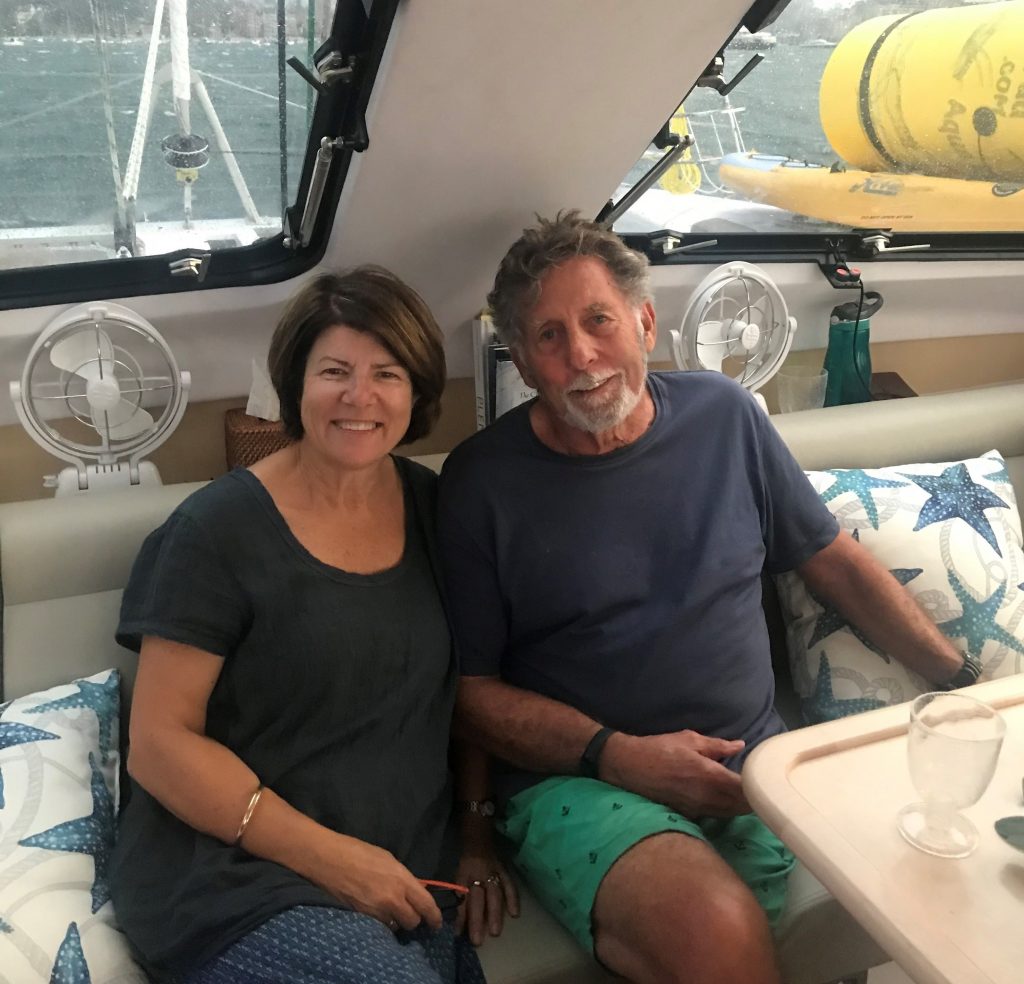
So we look forward to seeing Richard & Kerry taking delivery of their Seawind 1170 in Turkiye later this year, and enjoying some well-deserved time on the water. Their short-term plan is to cruise the beautiful Aegean Sea between Turkiye and Greece and experience the hundreds of spectacular and iconic islands close to the new Seawind base in Oasis Marina in Foca, not far from the SW1170 factory.
The long term plan? Clearly with Richard’s brief for the 1170, it can be whatever they want it to be!!!
very nice post